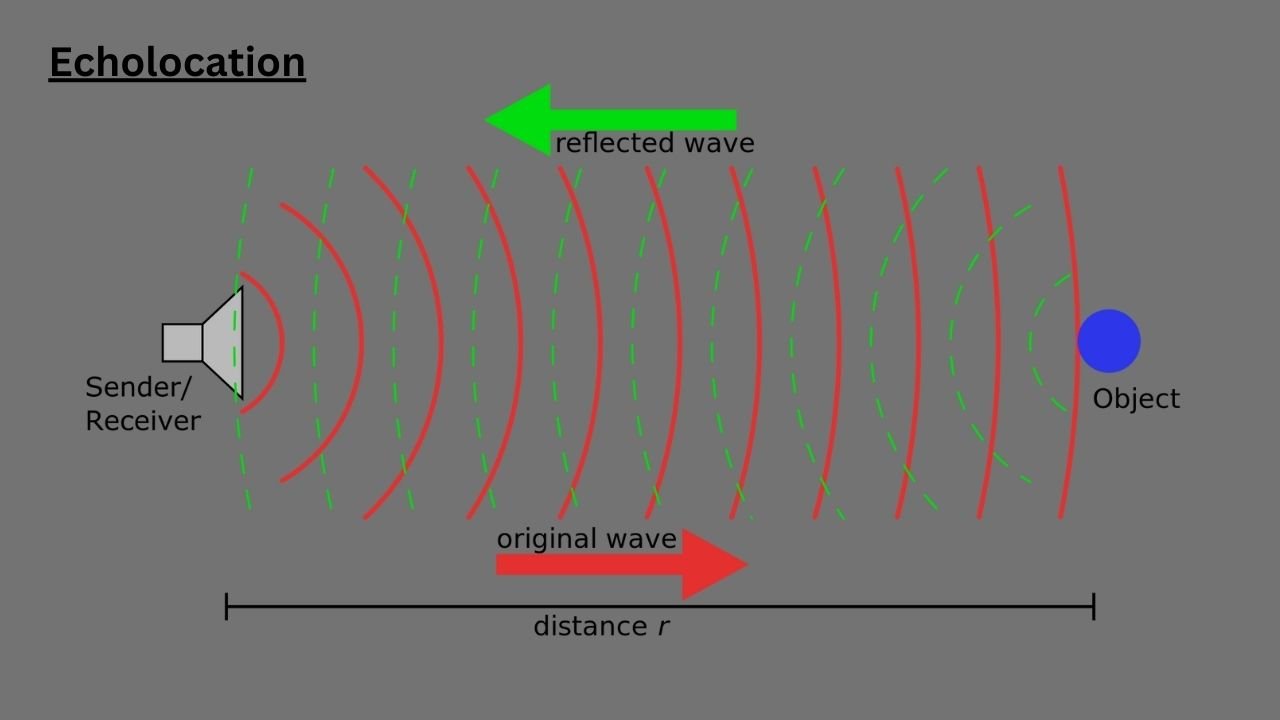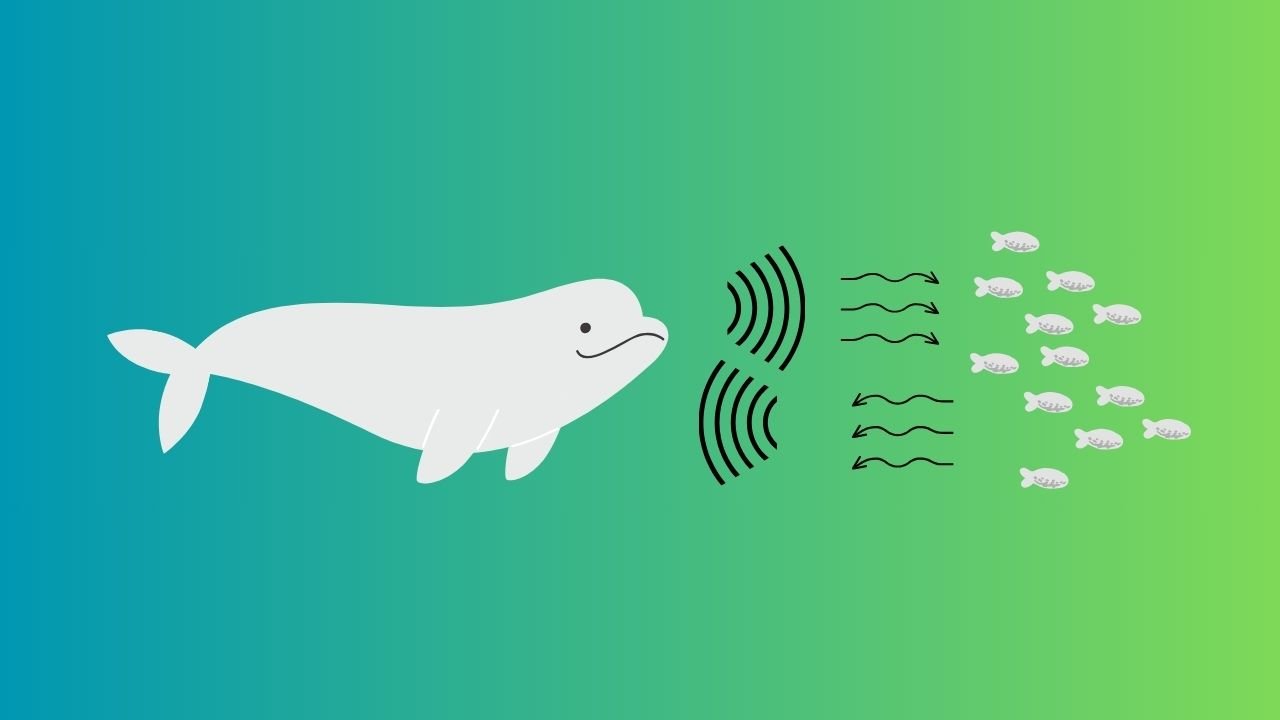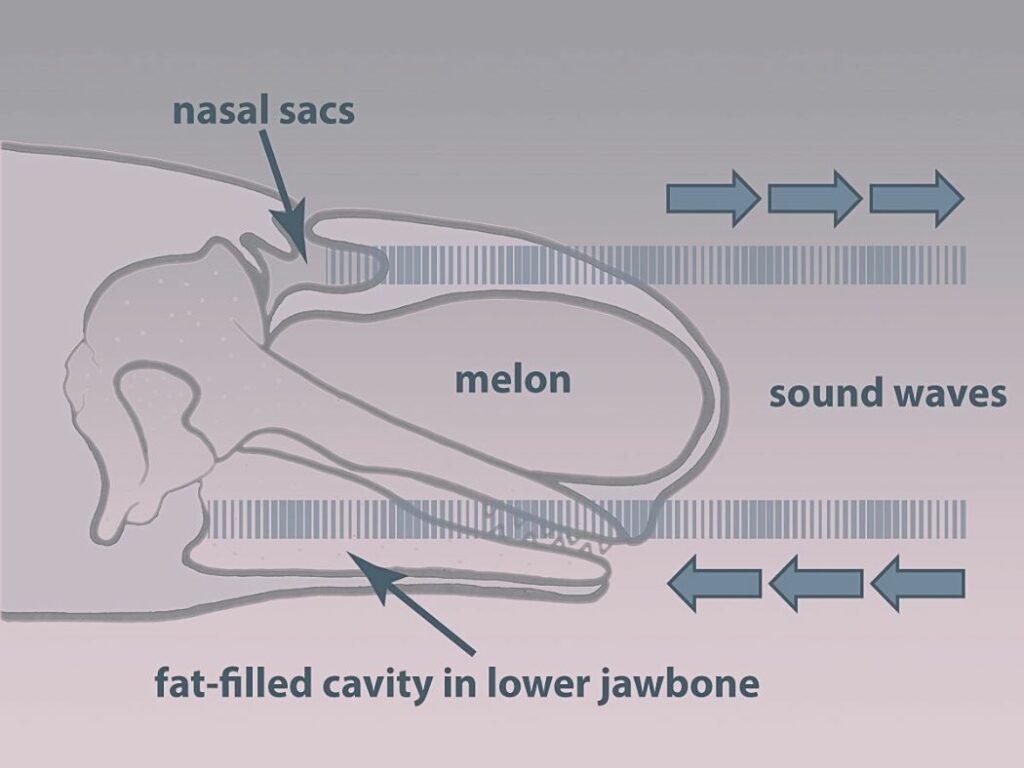Like bats and some species of cave birds, beluga whales use sounds to communicate, navigate, hunt, and detect objects underwater. Echolocation is their natural sonar system. They can make several types of sounds and are also known as “sea canaries”. Here, we gathered information about do beluga whales use echolocation, how they echolocate, and adaptations in beluga whales for echolocation.
Do Beluga Whales Use Echolocation

Yes, beluga whales use echolocation. They use echolocation and vocalizations to communicate, move, hunt, and find breathing holes in the ice. Their calls are divided into categories like clicks, whistles, and bursts. It is believed that they use clicks for navigation and foraging, whistles for social communication, and bursts for showing aggression.
Belugas use high-frequency sounds to communicate, which resemble bird songs. That is why they are nicknamed ‘sea canaries’. Belugas are one of the most vocal cetaceans. They can make up to 11 different types of sounds including clicks, whistles, cackles, trills, and squawks. Like other toothed whales, belugas do not have vocal cords, and the sounds are possibly produced when the air moves between the nasal sacks that are found near the blowhole.
Evidence shows that beluga whales are extremely sensitive to human-made noises. In a study, a beluga whale was noticed to produce sounds of maximum frequencies between 40 and 60 kHz in San Diego Bay, California. The same individual then produced sounds of maximum frequencies between 100 to 120 kHz at Kaneohe Bay, Hawaii. Different sound frequencies in the two regions were considered to be a response to the difference in the surrounding noise.
What Is Echolocation And How Does It Work?

Echolocation is a technique in which an animal emits sound waves that bounce off the surrounding objects and reflect echoes. From the echoes, the animal gets information about the distance, size, and shape of the objects in the surrounding area. All of the toothed whales, most bats, small mammals, and some cave birds use echolocation to navigate, hunt, differentiate between friends and enemies, and avoid predators and obstacles.
How Do Beluga Whales Echolocate?

To echolocate, beluga whales produce a rapid sequence of click sounds known as click trains. These clicks pass through their melon which acts like an acoustic lens. The melon focuses the sounds into a beam that is projected in the forward direction into the water. In the water, these sounds travel at a speed of about 1.6 km per second (about four times faster than air).
The sound waves hit objects in the surrounding and return in the form of echoes that a beluga hears and interpret. In this way, a beluga can determine the distance, speed, shape, size, and even the internal structure of some objects. This ability enables them to move around the thick ice sheets of the Arctic, to find breathing holes, to navigate, as well as to avoid predators.
Adaptations In Beluga Whales For Echolocation
The following are some of the adaptations in beluga whales for echolocation:

Melon
Belugas and most other cetaceans have a special organ for echolocation known as melon. Unlike other cetaceans, belugas have a highly bulbous and lobbed melon that gives a prominent rounded appearance to their forehead.
Melon is made up of fatty tissues. The fat content of a beluga whale’s melon is 60.1% isovaleric acid and 16.9% long-chain branched fatty acids. This composition is highly different from fats found in its body and may have a role in the echolocation.
The special feature of the beluga’s melon is that it is malleable; its shape changes with the emission of sounds. The melon acts like an acoustic lens and focuses the emitted sounds in the forward direction. When doing so, the air moves around its sinuses, and its shape changes.
Lower Jaw Bones
Like other toothed whales, the base part of the beluga whale’s lower jaw is widened and hollow. These hollow bones have fat deposits extending back towards the hollow ear-bone complex known as the auditory bulla.
These fat-filled cavities at their lower jawbones are the main sound reception regions. The lower jaw receives sounds and then conducts them to bones in the middle year, inner ear, and finally to hearing centers in the brain.
Specialized Sense Of Hearing
Beluga whales have a specialized hearing sense. They have a highly developed auditory cortex; part of the brain that processes auditory information. They can hear sounds within the frequency range of 1.2 to 120 kHz. Their highest sensitivity is between the frequency range of 10 and 75 kHz. Humans can hear sounds at an average frequency range of 0.02 to 20 kHz.





